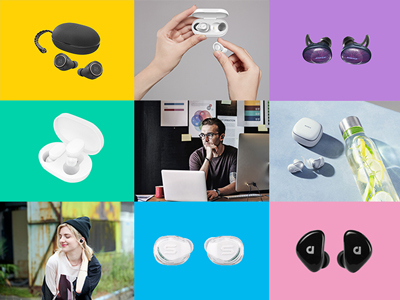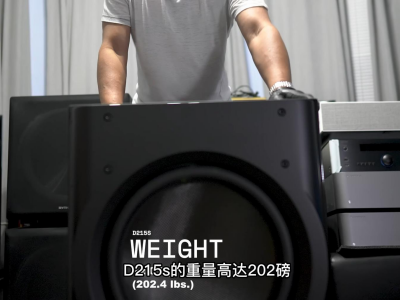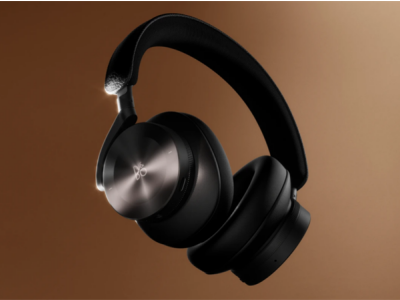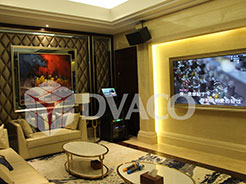前文回顾
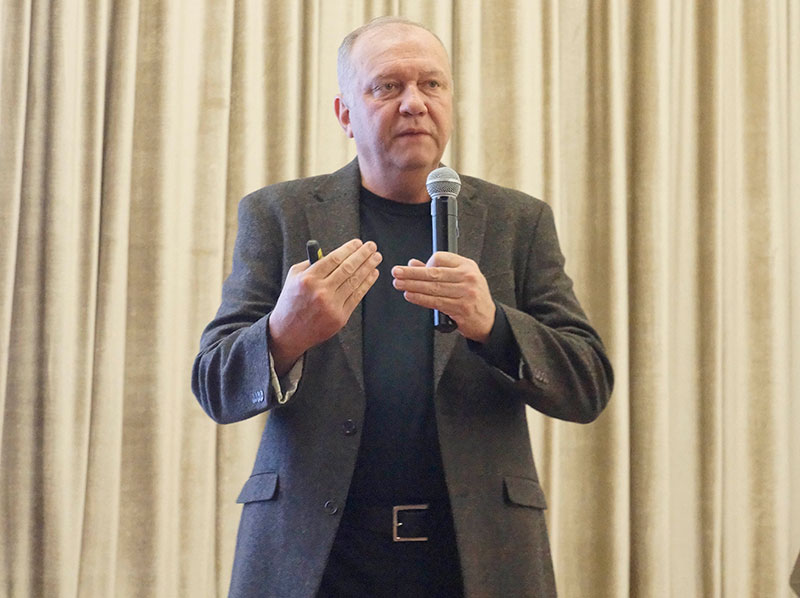
Absorption Coefficient (AC)
吸声系数
In the early days, most used1” (25mm) thick panels. It was cheap and plentiful. Soon it was pointed out that using 2” (50mm) produced better results and then 3” (75mm) and even thicker layers were used. The science behind this is based on understanding the acoustical absorption coefficient (AC). It is defined as the ratio of energy absorbed by a material to the energy incident upon its surface.So, a coefficient of 1.0 means all the sound hitting the panel front surface is absorbed. One inch treatments did a good job of absorbing high frequencies but very little at lower frequencies. That’s because the AC became lower and lower as the frequency became lower. These 1” panels absorbed the lively high frequencies but virtually passed unaffected the lower ones. This means that a 1” panel placed at a mirror point was doing half the job (technically less than half the job).Diagram 2 shows a comparison of the various thicknesses of Owens Corning 703 fiberglass panels. Noticehow 1” panels are operating at well below the desired AC of 1.0 at the all-important range below 1000 Hz.
在早期,大多数人使用1英寸(25毫米)的厚面板。它既便宜又数量众多。但很快有人指出,使用2英寸 (50mm)的面板能产生更好的效果,接着是使用3英寸(75mm),甚至更厚。这背后的科学是基于对吸声系数(AC)的理解。它是材料吸收的能量和发射到表面的能量之间的比值。因此,系数为1意味着所有撞击在面板表面的声音都被吸收了。1英寸的面板在吸收高频方面做得很好,但对较低频率的声音影响甚微。因为当频率越低时,吸声系数会越低。这些1英寸的面板吸收了高频的声音,但实际上没有处理较低频率的声音。这意味着一个放置在镜像点上的1英寸面板只完成了一半的工作(技术上来说还不到一半)。右显示了Owens Corning 703纤维板各种厚度的比较。请注意,在1000Hz以下的重要频率范围内,1英寸面板的吸声系数远远低于所需的吸声系数1。
It’s interesting to note that the chart seems to show the thicker panels absorbing more than 100% of the sound. This because the measurement procedure only counts the front surface area in the calculation of the AC. The sides of the panel are not considered in the calculation of the surface area yet they do absorb sound. It’s also important to point out that the measurement of AC includes the amount of random incidence sound absorbed by the panel. This is good for calculating how many panels are required for a concert hall or church but it tells us much less about how the panel handles sound coming from a specific direction; a specular reflection.
有趣的是,根据图表显示,较厚的面板吸收了超过100%的声音。这是因为吸声系数的计算只考虑了面板前表面的测量,面板的侧面没有考虑在内,但它们确实吸收了声音。另外需要指出的是,吸声系数测量也包括面板吸收的随机入射声量。这对于计算音乐厅或教堂需要多少个面板是很有用的,但关于面板如何处理来自特定方向声音的信息就少得多了。
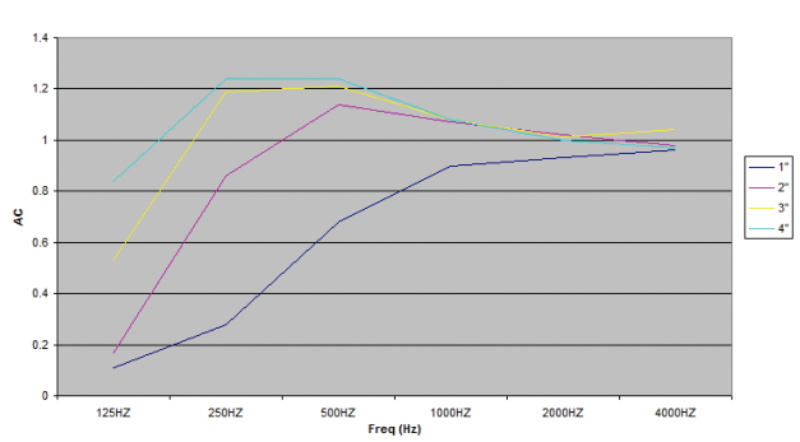
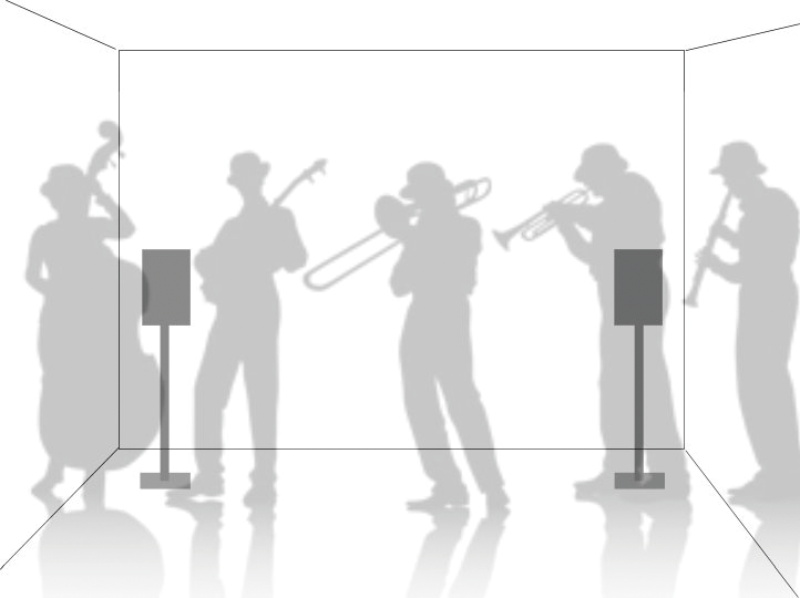
New Data 新数据
Dr. Floyd Toole in his book“ S o u n d R e p r o d u c t i o n | Loudspeakers and Rooms” (Chapter 21.3.2) discusses the acoustical implications of typical fiberglass panels. He provides the information in part to support his caveat that a good speaker’s first lateral reflections should not necessarily be absorbed; a topic we’ll discuss. The data reveals that these absorbers do not uniformly absorb all frequencies despite the apparent uniformity typical AC plots show. He also points out that regarding specular first reflections from the speaker to the listener, the absorption of typical fibrous panels depends on the angle the sound wave is incident to the panel. Some noteworthy conclusions are:
Floyd Toole博士在他的书《声音重播|扬声器和房间》 (第21.3.2章)中讨论了典型的纤维玻璃面板的声学影响。他提供了信息来支持他的理论,即一个好音箱的第一次侧面反射不一定要被吸收;这是我们将要讨论的话题。数据表明,尽管这些典型的吸声体有着明显一致的吸声系数,它们也不能均匀地吸收所有频率。他也指出,对于音箱到聆听者的镜面第一次反射,典型纤维面板的吸声取决于声波进入面板的角度。一些值得注意的结论如下:
AC graphs are insufficient because they are based on random incidence measurements and not specular ones. They have different absorption levels for various frequencies when the incident sound is at an angle versus at random angles. They also lack the resolution to show the true impact on frequency response by the reflection. Since the reflected sound has a clear impact on the measured listening position frequency response, this is important to know. Finally, AC measurements do not include data on higher frequencies (up to 20K Hz) which show a lower absorption due to reflection of specular reflections at these higher frequencies.
吸声系数的图表是有不足的,因为它们是基于随机入射声的测量,而不包括镜面反射的部分。当入射声是某一个角度而不是随机角度时,它们对不同频率有不同的缺乏具体的数字来显示反射对频率响应的真实影响。因为反射声对测量的聆听位置频率响应有明显的影响,所以了解这一点很重要。最后,吸声系数的测量不包括高于20kHz的频率,它们因为镜面反射而表现出更低的吸声系数。
Panels of at least 3” (75mm) or thicker are required to adequately absorb frequencies above thetransition frequency. The transition frequency being the point above which specular reflections dominate our design and calibration strategies;usually between 300 Hz and 500 Hz in the typical small room.
至少3英寸(75mm)或更厚的面板需要吸收转换频率以上的频率。转换频率是镜面反射主导我们设计和校准策略的点,在典型的小房间中,通常指300-500Hz之间的频率。
The fabric used to cover the treatment has little effect on lower frequencies but can reduce the absorption at higher frequencies by making the panel reflective.This points out one of the valuesof using a fabric which has similar properties to speaker grill cloth which is designed to be acoustically
transparent (at least it tries to be transparent). It also points to the popularity of the ubiquitous Guilford of Maine FR701 fabric, which, while still reflective at higher frequencies provides a more “grill cloth-like”texture.
声学材料表面的纤维布对低频几乎没有影响,但会因为声反射的原因减少声学材料对高频的吸收。这就指出了应用在音箱表面的纤维布被设计成透声(至少它试着做具有声音穿透的能力)的价值之一。它也指出Guilford of Maine FR701纤维布普遍受欢迎的程度,尽管在更高频率下仍能反射,但它提供了一种更“具声音穿透性”的材质。
Basic Observations基本的观察结果
So, what is a DIY Enthusiast to do? Glue 4” (100mm) panels on the wall? Use no panels? Everyone knows that the sound is better with panels… right?
那么,DIY爱好者要做什么呢?把4英寸(100毫米)的面板粘在墙上?不使用面板?每个人都知道用面板的声音更好,对吧?
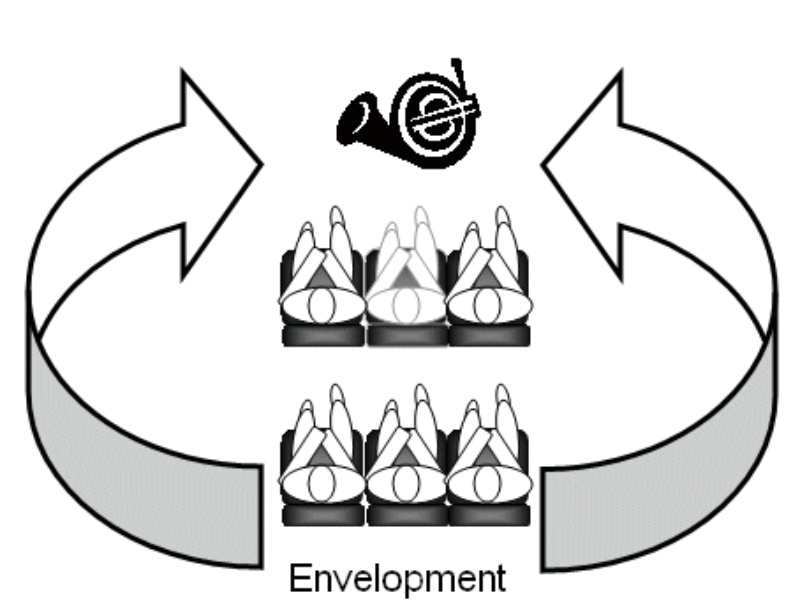

Let’s look at some basicobservations:让我们看一些基本的观察结果:
Absorbing the first lateral reflections does indeed improve focus (stereo imaging) and detail by increasing the amount of direct sound with relation to the reflected or indirect sound. If that’s your preference use a thick absorber to reduce frequency response distortion.
Absorbing the first reflections also reduces the apparent soundstage width and spaciousness of the sound field. If you prefer a wider, and more three-dimensional sound stage, don’t absorb first lateral reflections. This where Dr Toole’s assertion that these reflections should not necessarily be absorbed originates. A good speaker (one with excellent off-axis response) will create reflections that enhance envelopment and spaciousness.
Since the reflections are less frequency response distorted (due to absence of panels) the listening position frequency response will be more like the speakers engineered response.
吸收第一次侧面的反射声确实可以通过增加相对于反射或间接声的直达声的总量,来提高聚焦感(立体声像)和细节。如果你偏爱使用厚的吸声体来减少频响的失真,那么需要注意对第一次反射声的吸收也会明显减少声场宽度和空间感。如果你更喜欢更宽的三维声场,不要吸收第一次侧面反射声。Floyd Toole博士主张这些反射不一定要被吸收的缘由如下。一个好的音箱(有着出色的离轴响应)所带来的反射声可增强包围感和空间感。因为反射声的频率响应失真更小(由于没有吸声板),所以聆听位置的频率响应将更像音箱设计时的频率响应。
If you are a “near-field” listener (sitting very close to the speakers),panels will have less effect because the primary sonic source you are hearing is the direct sound of the speaker which minimizes the reflections effect on the sound at the listening position. This scenario, is not uncommon for many hard-core two-channel audiophiles.
如果你是一个近场的聆听者(坐在非常靠近音箱的位置)。面板的影响更小,因为你正在听的主要音源是音箱的直达声,它最小化了聆听位置声音
的反射影响。这种方案在老派的两声道发烧友中并不少见。
If you have a theater and more than one seat (especially if you have more than one row), it’s not practical to hog the one good seat (the sweet spot for near-field listening). You’ll need to have the seats deeper in the room to provide a satisfactory experience to all. Reflections begin to take on a much larger role. See my article on the sweet triangle in this blog. Over-absorbing reflections can also reduce the width of the sweet triangle. In the case of a surround sound system, over absorbing can create a scenario where speakers do not create a cohesive surround field.
如果你有一个影院,而且座位不止一个(特别是如果你有多于一排的座位)。只选择一个好位置(近场聆听的甜区)是不实际的。你需要在房间靠后的位置拥有多个座椅位置,来提供一个让所有人满意的体验。反射声开始扮演更重要的角色。在HAA网站中可以看到我关于甜区三角形的文章。过分吸收反射声也会减少甜区三角形的宽度。在一个环绕声系统的案例中,过分吸声会导致音箱不能产生一个有凝聚力的声场。
Unfortunately, you see the use of absorbing panels is not a cut-and-dried situation. The proper use depends on the speaker you own,your listening habits, and, of course,your room.
不幸的是,你看到吸声板的使用并不是一成不变的。正确的使用取决于你的音箱,你的聆听习惯,当然还有你的房间。
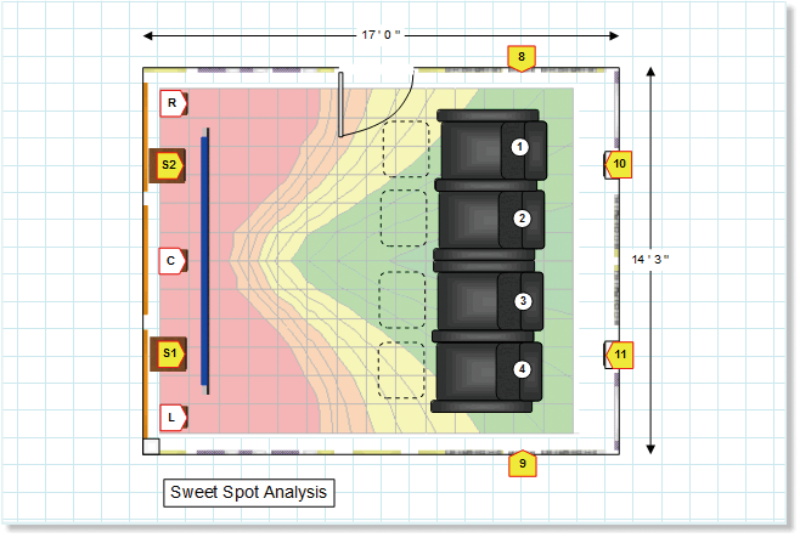
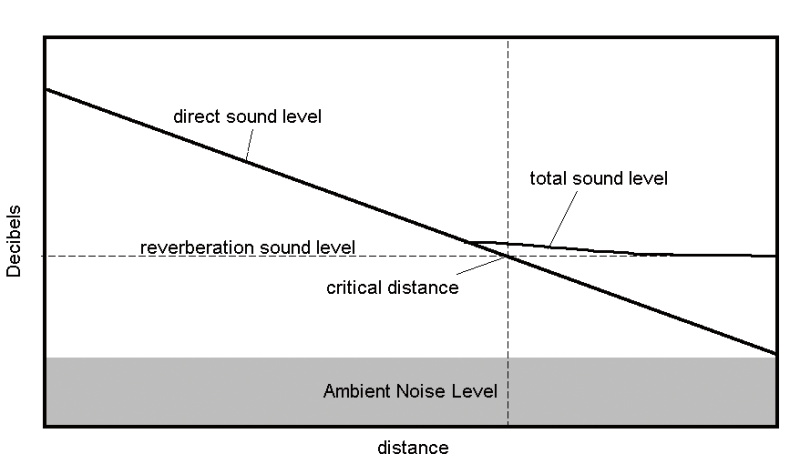
The Room
房间
One topic which seems to pop up in this kind of discussion is that of the RT60 of the room. The reverberation time, at a particular frequency, is defined as the timen taken for sound to decay by 60 dB;this is often abbreviated to RT60.The significance of RT60 is that the reverberation time is proportional to the reverberant sound level in the room. Basically, its how we compare the reverberant versus the direct sound levels. It was impractical to measure the reverberant sound level directly in the early days (still is) so a series of empirical values of RT were collected over time
representing the desired RT60 for different size spaces and different uses. Larger performance spaces have long RT60’s, school class room auditoriums tend have lower targets.In an HAA calibration we primarily use our RT measurement to tell if we are over-treating the room. An especially small room can becomeover treated with just a handful of absorptive treatments. The truth is that for most home listening rooms,calculating RT60 is not a useful tool. We use RT measurements as a warning sign to stop putting absorptive panels on the wall (or to remove some in a finished install).This is true for a variety of reasons:
在这种讨论中出现的一个话题是房间的RT60。一个特定频率的混响时间被定义为声音衰减60dB所需的时间,通常缩写为RT60。因为混响时间与房间内的混响声压成正比。RT60的意义在于,我们基本上会用它来比较混响声和直达声的声压。早期(包括现在)直接测量混响声声压是不切实际的。
所以,随着时间的推移,我们收集了一系列RT的实验值,这些值代表了不同大小空间和不同用途所需的RT60。较大的视听空间有较长的RT60,学校教室、礼堂的目标值往往较低。在HAA的调校中,我们主要使用RT测量来判断是否过度处理了房间。而一个特别小的房间可能只做了一小部分吸声处理就会变成过度处理。真相是对于大部分房间来说,计算RT60并不是一个有用的工具。我们只是使用RT测量作为警告信号,来决定是否不在墙上安装吸声板(或在完成安装后移除一些)。这么做的原因有很多:
The fundamental basis for acoustical calculation in large room acoustics depends on a “free space”model. This why random incidence measurements of AC for treatments are so useful for commercial acoustics. The reverberant sound field in a large space is largely uniform and diffusive; randomized.
Most home theaters are anything but a free space (no pun intended). Early reflections are considerably louder in a small room because of the short distance they travel to our ears. The sound field is not uniform,highlighting our interest in specular reflections over calculating the aggregate effect of all reflections asin a concert all or auditorium. The fundamental requirement for an accurate RT60 is a largely uniform reverberant sound field. That’s why in the HAA we use the term RT (reverberation time) to let everyone know we know the RT60 is not a true RT60 even though we use the same procedure to measure it.
大房间声学计算的基本依据是“自由声场”模型。这是吸声系数的随机入射声测量在商业声学处理中如此有用的原因。大空间内的混响声场基本上是均匀、随机分散的。但大多数家庭影院绝不是一个自由的空间(没有双关的意思)。在小房间里,早期的反射声音要大得多,因为它们传到我们耳朵里的距离很短。声场不是均匀的,增强了我们对镜面反射的兴趣,而不是像在音乐厅或礼堂那样计算所有反射的综合效应。得到精确的RT60的基本要求是一个均匀的混响声场。这就是为什么在HAA中,我们使用RT(混响时间)这个术语来让所有人明白,其实我们知道RT60不是一个真正的RT60,尽管我们使用了相同的程序来测量它。
Our rooms are small. The recommended RT times for small rooms, as given by a variety of organizations, is between 200 ms and 500 ms (500 milliseconds = ½ second). Most residential rooms already fit that specification. There is little need to reduce the RT unless the room is exceptionally large or lacks the typical absorptive elements found in a home (furniture, drapes, carpeting, moose heads, etc.).
我们的房间很小。各种各样的组织都给出了小房间的推荐混响时间,介于200ms到500ms(500ms=½s)之间。
大部分住宅的房间都适应这个标准。除非房间特别大,或者家中缺少常见的典型吸收元素(家具、窗帘、地毯、麋鹿头等),否则不需要减少混响时间。
Large room acousticians use RT60 as a calculation tool in the design phase of a project. Using formulas like Sabines, Fitroy’s, Eyring, and others, they can accurately calculation how much surface area needs to be treated to hit a target RT60. These formulas break down as the space becomes
smaller. They are not a useful tool to use in a small room. In the HAA HT3 workshop we demonstrate how placing treatments in various places has a greater effect on the RT than changing the number of panels in the room. Using a formula to calculate how many panels you need usually over-treats a room and it doesn’t tellyou where to put the panels.
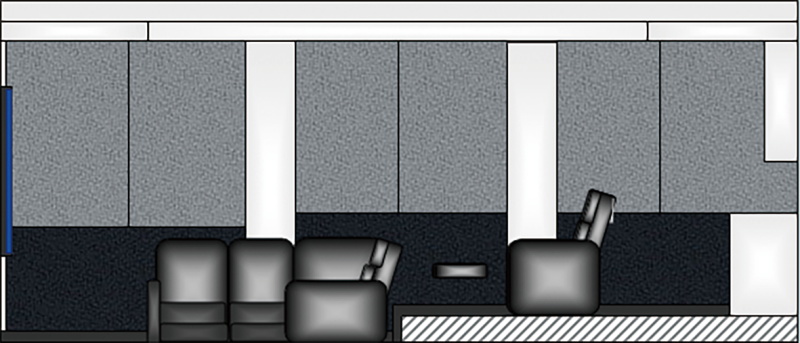
大房间的声学工作人员在项目设计阶段使用RT60作为计算工具。使用的公式像Sabines、Fitroy’s、Eyring等等。它们可以精确计算要达到目标值RT60,需要对多大的表面区域进行处理。但这些公式会随着房间变小而失去作用,它们在小房间中不是有用的工具。在HAA HT3课堂上,我们展示了在不同的地方放置声学材料对RT的影响比改变房间的面板数量更大。使用公式来计算你需要多少面板通常会过度处理一个房间,它也不会告诉你把面板放在哪里。

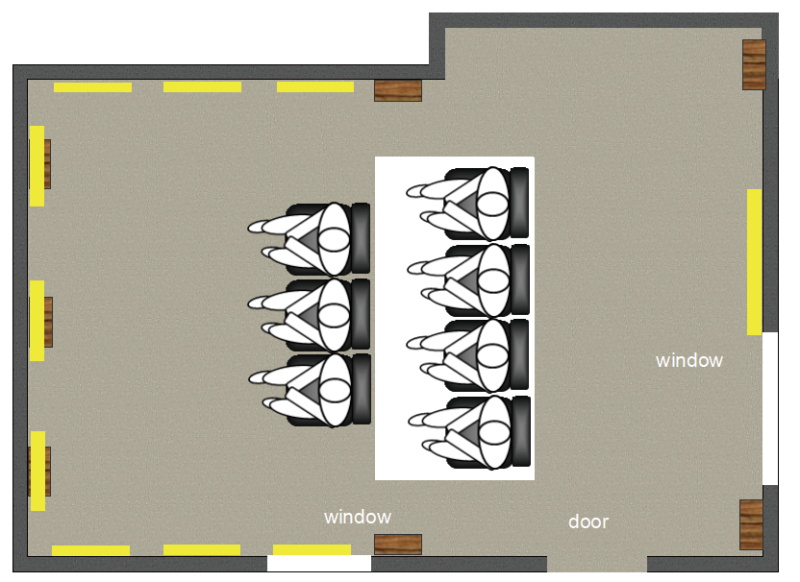
Other Factors
其它因素
Ok, so it looks like absorptive acoustical treatment is of limited value in a small room… but it sounds better when we use it!!! The reality is that treating a small room is necessary in a high performance installation but it doesn’t depend on absorbing all or even most reflections.
It depends on understanding the complex structure of the sound field and the nature of each reflection point. We use absorption (along with other treatments) to craft a seamless and spacious sound stage while preserving high quality focus(imaging) and detail. You can read my post about focus and envelopment here. Other factors include the utility of using the right kind of absorber to control low frequency effects like SBIR (speaker boundary interference response), compensating for poor speaker off axis response, crafting the sound stage by using a distributed pattern of absorption, increasing the diffusiveness of the sound field, and others.
所以在一个小房间中,吸收性的声学处理价值是有限的……但当我们使用它了,确实声音听起来更好!实际情况是,在高性能的安装中,对小房间的声学处理是必要的,但它不依赖于吸收全部或大部分反射声。它取决于理解声场的复杂结构和每个反射点的性质。我们使用吸声(以及其他声学处理类型)来创造一个无缝和宽敞的声场,同时保持高质量的聚焦(成像)和细节。你可以在HAA网站阅读我关于聚焦和包围感的文章。其它因素包括使用合适的吸声体来控制低频效应,像SBIR(音箱边界干扰效应)、补偿不好的扬声器偏离轴响应、使用分散式的吸声模式来创造声场、增加声场的扩散以及其它因素。
Perhaps the most tangible thing this discussion points out is that treating reflections with absorption
depends on the reflection; its source and its direction. We need a strategy based upon specular reflections referencing the personal preference of the client. Panels in the correct position are good, but panels in the wrong place are bad. Above all, over treating a room with absorption is a definite no-no. A good treatment strategy is possible in a small room but I’m afraid this post is already too long and I need to promise I’ll continue this series in my next blog article. Let me know your questions in the forum and I’ll tailor the articles to your needs.
也许文章指出的最实在的事情是用吸声处理反射依赖于反射本身,比如它的来源和位置。我们需要一个基于参考客户个人喜好的镜面反射策略。放在正确位置的面板是好的,在不正确位置是不好的。总而言之,用吸声过度处理一间房间是明确的禁忌。小房间也可以有好的声学处理策略,但我担心这篇文章已经太长了,我需要保证在我将在下一篇文章中继续这个系列。让我知道你的问题,我将会根据你的需要来撰写文章。




